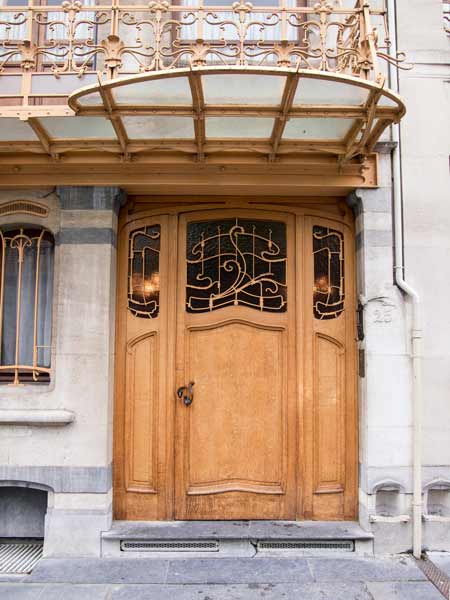
Victor Horta was a Belgian architect and a leading figure in the Art Nouveau (New Art) movement – a movement that mushroomed all over Europe starting in the 1890s.
The Horta museum in Brussels is housed in what was Horta’s house and studio, which he designed in the Art Nouveau style.
He had the house built over a three-year period – from 1898-1901 – and he lived and worked there until 1915.
He then sold the house and the studio separately in 1919 and they were eventually bought by the city of Brussels in order to create the museum.
Placing the events in history, Horta had the house built at a time when the whole of Europe was enjoying the flowering of Art Nouveau, and he sold the house a year after the end of a world war that left bits of splintered bone over half of Belgium.
Well, whatever I might try to read into the dates, Wikipedia tells me that Horta…
…left Belgium for London in February 1915 and attended the Town Planning Conference on the Reconstruction of Belgium, organised by the International Garden Cities and Town Planning Association.
Unable to return to Belgium due to the war, at the end of the year he decided to go to the United States, where he gave a number of lectures at universities including Cornell, Harvard, MIT, Smith College, Wellesley College and Yale and, in 1917, became Professor of Architecture at George Washington University, and Charles Eliot Norton Memorial Lecturer.
Inside The Horta House
The house is built over several floors, and there is a wonderful staircase which you can see in this photograph, that winds itself up to the top of the house. It feels light and delicate.
There are lots of little landings leading off this way and that – giving the house a free-spirited, whimsical feel. It is reminiscent of Escher – as though the staircase would wind itself up and off to somewhere impossible.
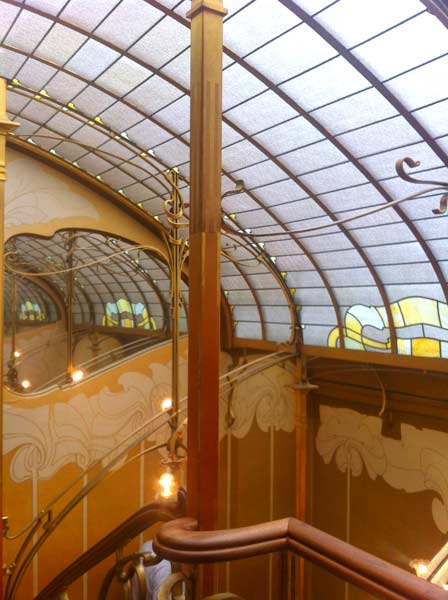
Organic Goes Out Of Fashion
After the First World War the curvy, organic shapes that typify Art Nouveau were out of fashion. Taste moved to something more straight-lined and geometric.
When I think of that, it makes me wonder whether it was a just simple change of taste and fashion, or whether it was the all-too-organic war that people wanted to forget and the technological dream of the future that they wanted to embrace?
Whatever the spur to the change of taste, Horta designed the Palais des Beaux-Arts in Brussels in the 1920s in a much straighter, more geometric style.
We went to the Palais des Beaux-Arts (known locally as BoAz) for an exhibition of the drawings of Watteau, and while we there I took the opportunity to take a couple of photos of the interior – not very exciting, but the light was low.
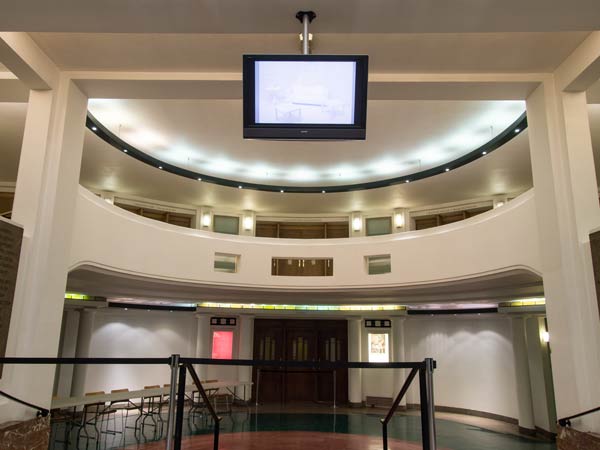
I liked the entrance to the toilets, and I would have grabbed a shot of the urinals in the gents if I had had more time to prop the camera somewhere. It’s rare that I am struck by the beauty of a urinal, but the way the stall curved around a wall that sloped gently downward was very sympathetically done.
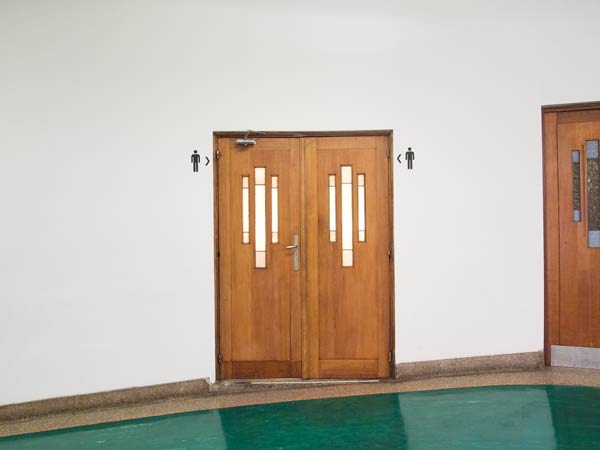
The main hall (which I didn’t photograph) was something else again – very spare and big and empty, and a bit unloved.
The Exterior Of BoAz
The exterior of the Palais des Beaux-Arts is in the same pale stone that features in quite a number of buildings in Brussels – and very strong and irresistible it looks. I can’t help but think the appeal had something to do with a psychological wish to build something that looked as though it could resist destruction.
Here is a shot of the building and also a close-up of the balcony.
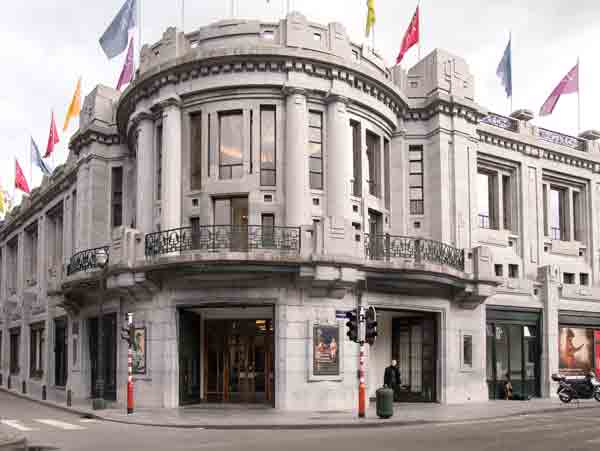

Getting To The Museum
It’s easy to get to the Horta Museum by public transport. It’s in the Ixelles section, south east of the centre of the city.
Take tram #92 from Place Stephanie and get off as near as you can to Avenue Americain, which is a street to the left of the tram route.
The Horta House is down the street on the right and easily recognised by the yellow metal struts of the balconies.
It’s open from 2pm to 5pm. Expect to wait in a queue (line) along the street because the house is popular and only 45 people are allowed inside at any one time.
The reason they only allow 45 people at one time into the building is because of the strength (the possible lack thereof) of the building. However, when we were climbing the stairs to the upper floors I gave the bannister a thump to see whether it would shiver or flex.
The bannister did not give an inch and the stairs themselves felt rock-solid despite the numbers tramping up and down them.
So given the very open, light, and airy feel to the building – and the thin metal struts that make up the structure – I would say that Victor Horta was a first class engineer as well as a wonderful architect.
You have to park all your belongings when you get into the museum – no bags, no outer coats, no umbrellas. The cloakroom has a haphazard arrangement for keeping different people’s bags separate from their neighbour’s bags.
The man who took our bags pushed them into a cubbyhole and separated them from someone else’s bags by cramming a piece of paper between the two. It worked out OK though, and we got our bags back at the end of our visit.
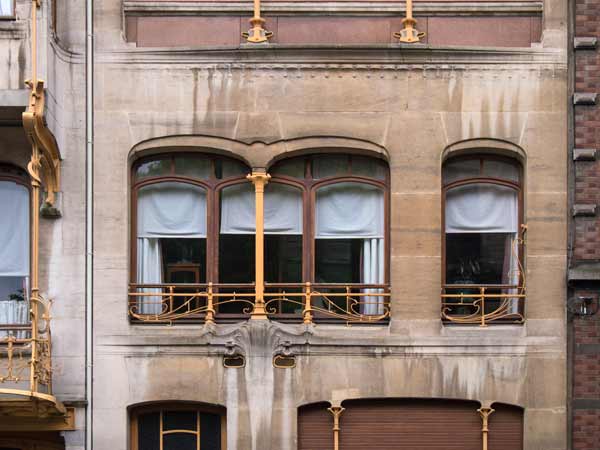
Brussels – Hiding In Plain Sight
This is the second of two articles. Here is the link to our article entitled Brussels – Hiding In Plain Sight.